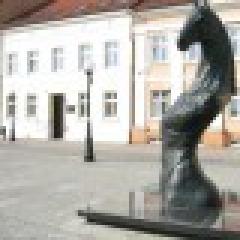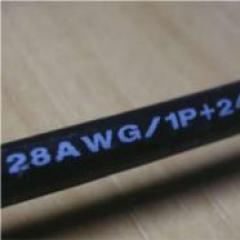Shielded USB cable. Selecting a USB cable. How to choose a USB cable
How is a USB cable different from other cables? The main parameters when choosing a USB cable are standards, markings and size.
Today, almost all multimedia devices are equipped with a USB connector. Sometimes the connection occurs through an extension cord, and not directly to the port.
You need to choose the USB cable correctly. Firstly, each cable has its own marking. For example, HIGH-SPEED 2.and 028AWG/2C+28AWG/2C.
So, if you need a cable that supports the USB 2.0 standard. or 3.0., then the inscription should read “USB High speed cable 2.0”. USB 2.0 standard. does not support cable marked 1.1.
A standard high-speed USB 2.0 cable consists of one 28 AWG twisted pair to carry data and a pair of conductors to carry power from 20 AWG to 28AWG. In addition, the USB cable must be shielded.
When transmitting a signal using USB, it is important that it does not fade. Therefore, when choosing a suitable USB cable, you need to determine the required size.
For example, the marking "28 AWG/1P.....", the first numbers mean the maximum length of the USB cable - 28 AWG = 81 centimeters. If 26 AWG, then the cable length is up to 1 meter 31 cm. With markings 24 AWG, 22 AWG, 20 AWG, the cable length can be up to 2.08 meters, 3.33 meters and 5.00 meters, respectively.
Therefore, if the length of a USB extension cable is 5 meters, but there are two pairs of 28 AWG wires inside it, then it does not comply with the standards. At this length it should be 20 AWG.
Another cable with a length of 1.8 and marked 24 AWG (which implies a maximum length of up to 2 meters) complies with the standard. That is, the actual length of the cord should not exceed the maximum permissible data indicated on the cable.
The marking also contains other data: a note that the cable is shielded - Shield; wires twisted into a pair - P (Pair); two conductors - 2C.
At the end of the USB cable there is a small thickening, a ferrite ring. It works as a filter against RF interference and is present in all high-quality USB cables. On some extension cords it is located at both ends.
If the USB cable is incorrectly selected, the speed of data transfer may be significantly reduced. Also, the system may not recognize a device connected via USB or simply stop seeing it at any time.
The longer the cable, starting from 3 meters, the more problems may arise. To ensure stable operation of a USB device, you need to choose a USB cable that is as short and thick as possible. Then, when transmitting data, there will be less resistance and less signal attenuation.
Combining all that has been written, we can conclude:
- to choose a high-quality USB cable, you need to check the maximum length and AWG value;
- the inscription on the cable should read HIGH-SPEED 2.0;
- at least one end of the extension cord must have a ferrite barrel;
- The cable length should be as short as possible.
Nowadays, almost all multimedia devices have a USB connection. It happens that a USB device needs to be connected not directly to the port, but through an extension cord. Or you need to connect a printer, but there is no cable... This is where the problem arises: choosing a USB cable.
An incorrectly selected USB cable may:
- Reduce data transfer speed
- The device may not be recognized by the system
- The device may “disappear” at the most inopportune moment
The 2nd and 3rd points are usually relevant for long USB cables (3 m or more)
How to choose a USB cable?
Each normal USB cable contains the information we need:
It is worth paying attention to HIGH-SPEED 2.0 and on 28AWG/2C+28AWG/2C
According to the standard, a high-speed USB cable (USB 2.0) must consist of one twisted pair 28 AWG for data transmission and one pair of conductors 20 to 28 AWG (depending on cable length) for power. The cable must be shielded.
(AWG - American Wire Guide i.e. American standard for measuring conductors)
The thicker and shorter the cable, the lower its resistance => lower voltage drop across it => less likely that the USB device will be unstable.
Marking and corresponding maximum cable length:
28 AWG = 0.81 m
26 AWG = 1.31 m
24 AWG = 2.08 m
22 AWG = 3.33 m
20 AWG = 5.00 m
In the example above, the USB extender is 5 meters long, but there are two pairs of 28 AWG wires inside it, which means that this extender does not meet the standards (should be 20 AWG at that length).
Let's take another extension cord, this time its length is 1.8 m

We see that there is 24 AWG (up to 2 meters), so this cable meets the standards.
Other designations:
Shield - shielded cable
P (Pair) - the cores are twisted into a pair. The presence of P in one of the numbers is very desirable.
2C - two conductors
Ferrite barrel 
Used in many quality USB cables. Designed to suppress RF interference. Although its presence is not as important (than matching the AWG and cable length), it is better to choose with it.
conclusions
When choosing a quality USB cable, look to:
- AWG value corresponds to cable length
- There was an inscription HIGH-SPEED 2.0
- There was a ferrite barrel
A shielded, high-quality USB cable for connecting a modem to the USB connector of a PC, laptop or WiFi router is used when it is necessary to separate the modem and the device that powers it, for example, in places where there is no 220V network (attic, ventilation, etc.).
The cable is made of high-quality twisted pair (computer UTP cable category 5e) - copper wires are soldered in a certain way to the USB contacts: 5 pieces - to the power contacts (3 - to "+" and 2 - to "-"), 2 pieces - to data contacts, 1 piece - per connector body. Other types of wiring are also allowed: for example, 3 wires to the power contacts and 1 wire to the data contacts.
Top sales |
Antenna adapters (pigtails) for connecting external amplified antennas to modems and mobile routers of the third (3G UMTS/HSPA) and fourth (4G LTE) generations, suitable for all USB modems and portable routers that have an antenna connector, may have connectors on the other side : FME-male, N-male, SMA-female.
Universal 4G LTE + 3G modem. It has antenna connectors and is small in size. Works with any SIM cards of all Russian and European telecom operators (YOTA, Megafon, MTS, Beeline, Rostelecom, Tele2, Altel, Motiv, Tattelecom / Letay, etc.). Supports speeds up to 100 Mbps. Ideal for use with laptops abroad.
The most powerful LTE 4G + 3G kit for installation in a country house, private house, village, etc. There are no losses on the antenna cable, the cable length is 10 or 15 meters. Antenna gain - from 14 to 20 dB. WiFi coverage is up to 40 meters in diameter. Works with any SIM card of 4G LTE and 3G operators. Number of WiFi users - up to 32 + LAN connectors.
A circular omnidirectional antenna on a magnetic base is designed to enhance network signal reception for 4G LTE 800/1800 MHz, 3G UMTS 2100 MHz and GSM 900/1800 devices. Gain is up to 13 dBi. Cable length - 3m. All-weather. Suitable for devices with one antenna connector. Can be used with GSM, 3G and GSM+3G repeaters.
Nowadays, almost all multimedia devices have a USB connection. It happens that a USB device needs to be connected not directly to the port, but through an extension cord. Or you need to connect a printer, but there is no cable... This is where the problem arises: choosing a USB cable. But not everyone knows how to choose a high-quality USB cable...
An incorrectly selected USB cable may:
- Reduce data transfer speed
- The device may not be recognized by the system
- The device may “disappear” at the most inopportune moment
The 2nd and 3rd points are usually relevant for long USB cables (3 m or more)
How to choose a USB cable?
Each normal USB cable contains the information we need:
It is worth paying attention to HIGH-SPEED 2.0 and 28AWG/2C+28AWG/2C
According to the standard, a high-speed USB cable (USB 2.0) must consist of one 28 AWG twisted pair for data transmission and one pair of 20 to 28 AWG conductors (depending on the cable length) for power. The cable must be shielded.
(AWG - American Wire Guide i.e. American standard for measuring conductors)
The thicker and shorter the cable, the lower its resistance => less signal attenuation => less chance that the USB device will be unstable.
Marking and corresponding maximum cable length:
28 AWG = 0.81 m
26 AWG = 1.31 m
24 AWG = 2.08 m
22 AWG = 3.33 m
20 AWG = 5.00 m
In the example above, the USB extender is 5 meters long, but there are two pairs of 28 AWG wires inside it, which means that this extender does not meet the standards (should be 20 AWG at that length).
Let's take another extension cord, this time its length is 1.8 m

We see that there is 24 AWG (up to 2 meters), so this cable meets the standards.
Other designations:
Shield - shielded cable
P (Pair) - the cores are twisted into a pair. The presence of P in one of the numbers is very desirable.
2C - two conductors
Ferrite barrel 
Used in many quality USB cables. Designed to suppress RF interference. Although its presence is not as important (than matching the AWG and cable length), it is better to choose with it.
- AWG value corresponds to cable length
- There was an inscription HIGH-SPEED 2.0
- There was a ferrite barrel
Somehow like this..)))



